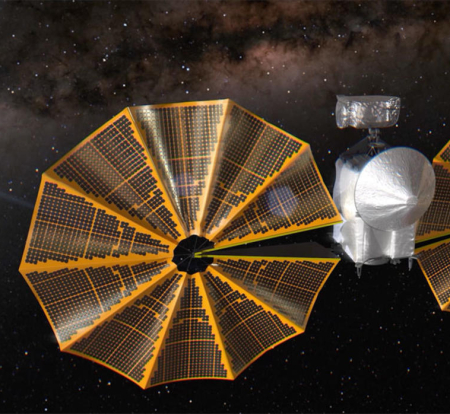Lockheed Martin invests $100 million in startup satellite maker Terran Orbital
Lockheed Martin has now invested $100 million in the startup smallsat-maker Terran Orbital, which has already been building satellites of a wide variety for customers.
Under the deal, which runs through 2035, the smaller Florida-based firm will build SAR and other advanced payloads, as well as satellite sub-assemblies, for the aerospace behemoth, Terran said in a press release today. These include electro-optical, hyperspectral, infrared and secure communication payloads, as well as things like star trackers and flight computers.
With this deal, Terran has also decided that it will no longer launch its own radar constellation, as that constellation would have competed directly with its radar satellite customers. Instead, it will make its radar satellite for others, including Lockheed Martin.
As an example of the variety of smallsats Terran Orbital has been building, it manufactured the smallsat lunar orbiter CAPSTONE for NASA, now on its way to the Moon but being operated for NASA by a different private company, Advanced Space.
Lockheed Martin has now invested $100 million in the startup smallsat-maker Terran Orbital, which has already been building satellites of a wide variety for customers.
Under the deal, which runs through 2035, the smaller Florida-based firm will build SAR and other advanced payloads, as well as satellite sub-assemblies, for the aerospace behemoth, Terran said in a press release today. These include electro-optical, hyperspectral, infrared and secure communication payloads, as well as things like star trackers and flight computers.
With this deal, Terran has also decided that it will no longer launch its own radar constellation, as that constellation would have competed directly with its radar satellite customers. Instead, it will make its radar satellite for others, including Lockheed Martin.
As an example of the variety of smallsats Terran Orbital has been building, it manufactured the smallsat lunar orbiter CAPSTONE for NASA, now on its way to the Moon but being operated for NASA by a different private company, Advanced Space.

